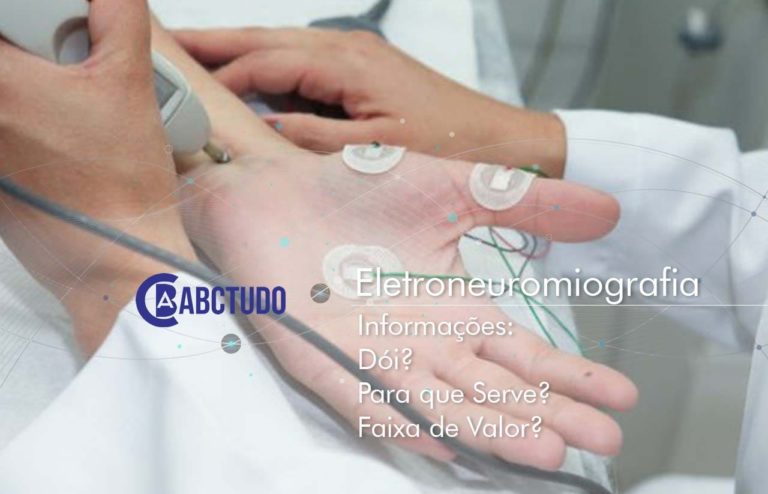ELECTRONEUROMYOGRAPHY (SGKN) Vitoria ES Brazil: Electroneuromyography Vitoria ES Brazil is used to detect, localise and define nerve and muscle disorders.
ELECTRONEUROMYOGRAPHY Vitoria ES Brazil
Two different methods are used:
Electroneurography (ENG) Vitoria ES Brazil
Investigates nerve conduction in the peripheral nerves (hands and feet). The nerves are stimulated using surface electrodes. Simultaneously, measurements are taken of the speed with which a nerve transmits electrical signals and the strength of nerve stimulation in the corresponding muscle. An ENG may, for example, be carried out in cases of polyneuropathy (damage to the peripheral nerves) or to localise and determine the extent of the damage when nerves have been injured or pinched (e.g. carpal tunnel syndrome).
- Carpal Tunnel Syndrome
Electromyography (EMG) Vitoria ES Brazil
Is used to record electrical activity in a muscle. Thin needle electrodes are inserted directly into the patient’s muscle. The activity of individual muscle fibres can thereby be determined. This examination method can, for example, determine whether muscle weakness is due to the muscle itself being diseased or whether the flow of information from the nerve to the muscle is disrupted. An EMG Vitoria ES Brazil can also indicate the likelihood of recovery when muscles have become paralysed due to nerve damage or nerve inflammation. Nerve damage can also be localised by means of an EMG.
Electroneuromyography (ENMG)
The electrophysiological examination of central and peripheral nervous system, neuromuscular transmission and the muscles with electroneuromyography (ENMG) is important in the assessment of neuromuscular disorders. The ENMG Vitoria ES Brazil laboratory is integrated into the Center for Neuromuscular Disorders.
Depending on the clinical problem, different ENMG examinations may be applied:
- Electroneurography (ENG) Vitoria ES Brazil
- Determination of nerve conduction with electrical stimulation.
- Electromyography (EMG)
- Analysis of electrical muscle activity with needle examination.
- Examination of neuromuscular transmission
- Analysis of signal transmission form the nerve to the muscle with repetitive nerve stimulation and stimulated single fiber EMG (ssFEMG)
- Examination of autonomic functions
- Analysis of the vegetative nervous system with determination of the sudomotor sympathetic skin response (SSR) and determination of R-R-interval variation.
- Motor-evoked potentials (MEP)
- Determination of central motor conduction time with magnetic impulses for examination of the pyramidal tract function.

City of Vitoria ES BRAZIL
In collaboration with the Parkinson’s disease and stroke teams we offer a Botulinum toxin consultation for the treatment of patients with focal dystonia and spasticity.
- Focal dystonia
- e.g. Dystonic Torticollis,
- Writer’s cramp
- Facial Movement Disorders
- e.g. Blepharospasm,
- Hemifacial Spasm
- Focal Spasticity
- e.g. After stroke,
- Cerebral Palsy,
- Trauma
Referral
A referral to the ENMG Vitoria ES Brazil or Botulinum toxin consultation can be made by letter, fax (+41 44 255 43 80) or secure mail ([email protected]).
Scientific Focus
The scientific focus of the research group is the examination of the role of physical exercise on muscle properties and course of neuromuscular and neurodegenerative disorders. One current project funded by the Swiss National Foundation (SNF) examines the effect of regular physical exercise in patients with Huntington-disease. Other clinical-scientific projects are dedicated to the clinical, pathological and genetic characterization of Swiss patients with muscle dystrophies and the McLeod neuroacanthocytosis syndrome.
There are periodic clinical-pathological conferences, twice per year together as a joint meeting with other Swiss neuromuscular specialists. Annual neuromuscular symposium are also organised.
Further Information
Please refer to our brochure “Neuromuskuläres Zentrum Zürich” (German, PDF) for further information.